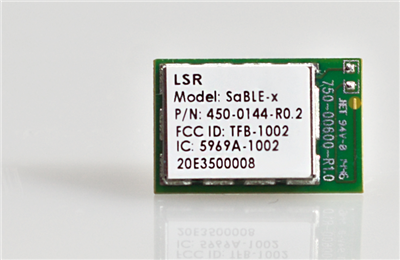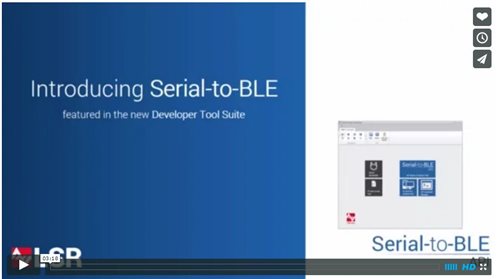SSZTC05 October 2015 CC2640
Guest author: Dave Burleton – vice president, LS Research (www.lsr.com), dburleton@lsr.com
For product developers looking to add Bluetooth® low energy capabilities to new or existing product designs, the advantages of utilizing a certified module to implement the TI SimpleLink™ Bluetooth low energy CC2640 wireless microcontroller (MCU) are clear and significant. Between minimizing design risk, accelerating the project timeline and minimizing the Non-Recurring Engineering (NRE) investment to complete the project, a certified modular option like LSR’s SaBLE-x™ module is a smart option to SIMPLIFY wireless development. Let’s face it, simple is smart, and we all could use a little bit more ‘simple’ in our design projects, no matter what your prior experience level is with Bluetooth low energy.

Taking the goal of simplification a step further, LSR set out to enhance its SaBLE-x module with a powerful, intuitive API to empower TI customers looking to turn existing products into “smart” products. Since those products likely already have an MCU on board, such as a TI ultra-low-power MSP430™ MCU, the engineering team’s likeliest path of least resistance is to keep the existing MCU and “bolt on” the wireless capabilities using UART or a similar approach. While easier and faster than a full redesign, it certainly isn’t a trivial matter, though. But with the new Serial-to-BLE™ API for the SaBLE-x module, simplicity can become a reality.
Unlike traditional AT Command Sets that have been utilized for decades to send serial commands, Serial-to-BLE takes a modern approach in how its commands are architected. By utilizing JSON-RPC, command sets don’t need to be abstract, difficult to learn and reliant on being executed in very specific sequences to be successful. The nature of JSON-RPC creates a command set that is both structured and human-readable, virtually eliminating the learning curve typically associated with utilizing an AT-like API.
Going even further, the Serial-to-BLE API is provided as a dynamic, sortable library right inside the Developer Tool Suite (DTS), a PC desktop application available as a free download. The DTS bolsters Serial-to-BLE with a number of helpful utilities and development tools. The C files for the host MCU are auto-generated, a USB bootloader utility, ‘PC as Host’ and scripting tools are all included allowing the developer to explore and test the API without having to invest the time to write a single line of code in their host MCU’s firmware up front.

On Tuesday, November 10th, LSR will be offering a free, live webinar: Simplifying Bluetooth development with Serial-to-BLE. The goal is to arm the audience with a good understanding of how the Serial-to-BLE API and the associated development tools can be utilized to accelerate and simplify the work to add the power of TI’s CC2640 wireless MCU to their product, thanks to the SaBLE-x certified module. LSR’s embedded software team will also walk through the steps to implement a SaBLE-x with a TI MSP430 MCU acting as Host.
Looking to implement BLE the smartest way possible? Simple is smart and the Serial-to-BLE API for LSR’s SaBLE-x module is the simplest way to add the power of TI’s CC2640 wireless MCU into your design.
I hope to see you on the webinar! Please register now!
ABOUT THE AUTHOR:

Dave Burleton is a Vice President at LSR (www.lsr.com), a global leader in wireless product development services and products. He has over 12 years of engineering, marketing, and sales experience in various technology spaces. With leadership roles in product management, strategic marketing, field sales, and sales operations, he approaches new product development from a broad array of perspectives, while maintaining a singular focus on demonstrating value to the customer. He holds a Bachelor of Science degree in Electrical Engineering and Mathematics from the University of Wisconsin – Madison.